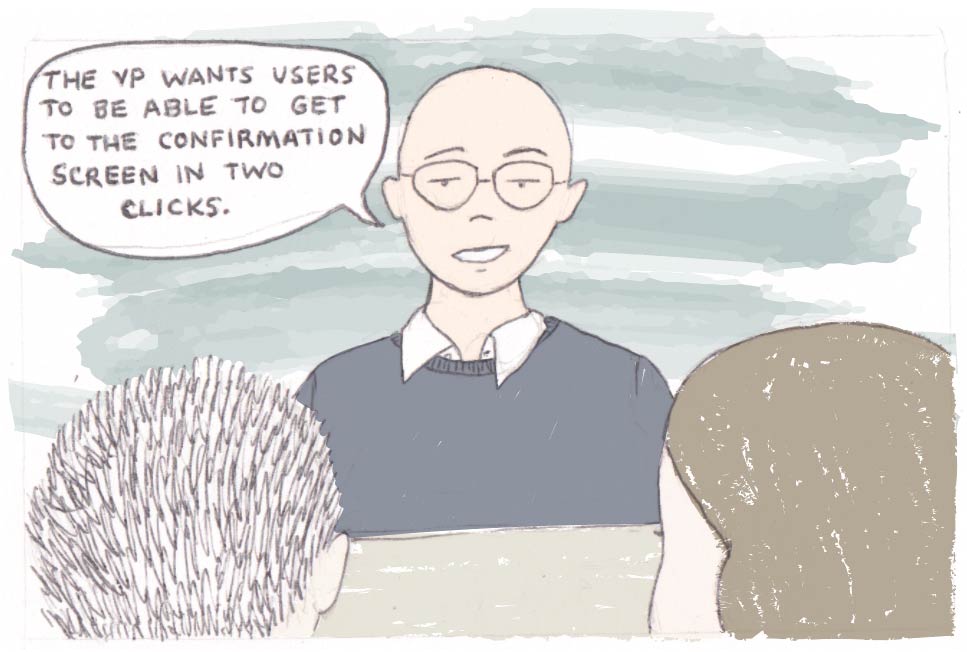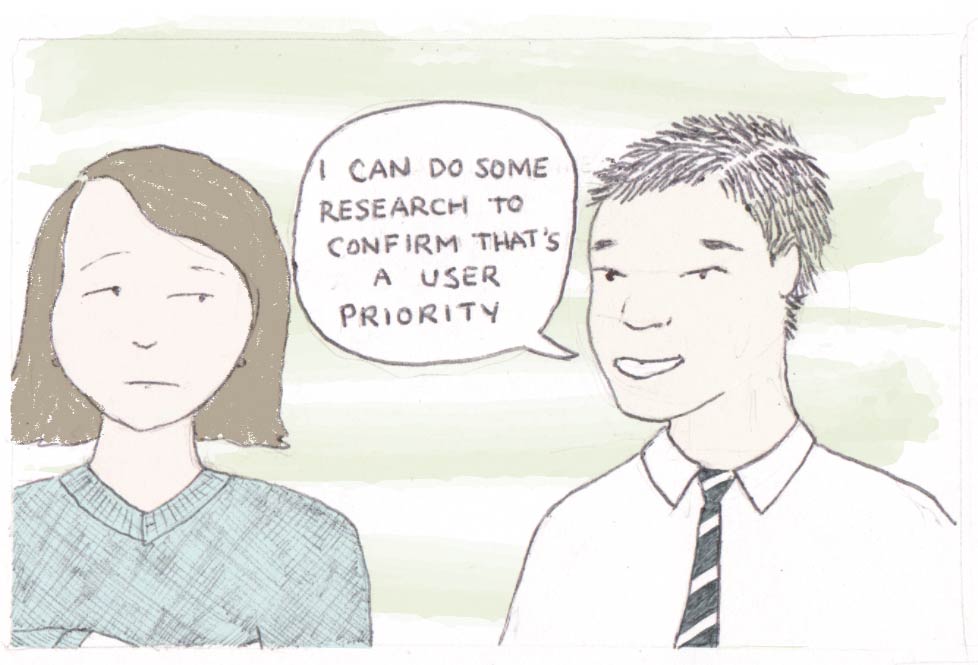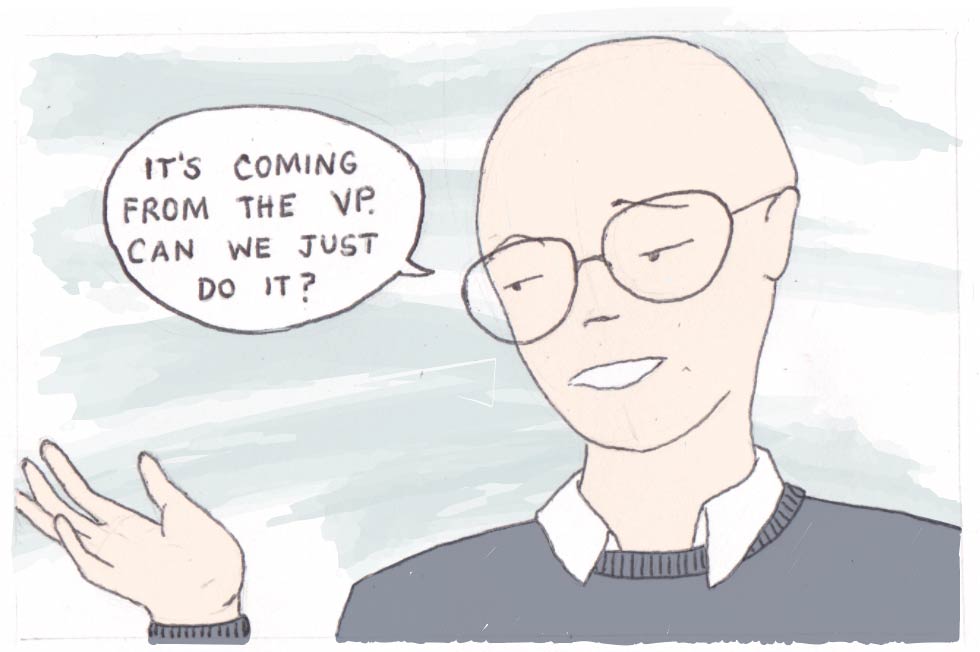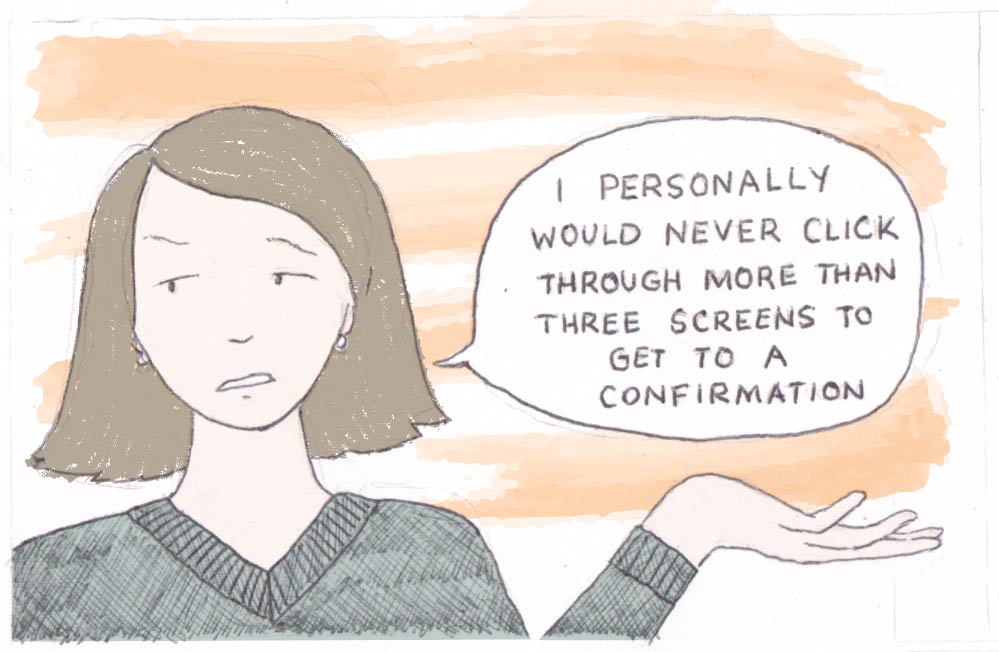How do I convince others that we should be doing more UX?
Does this situation feel familiar to you?
Here are 4 solutions we've sourced from industry pros:
- Filter
-
Org Size
- Large corporation
- Small business
- Startup
- Agency
- Freelance
-
Budget
- No budget
- Low budget
- Medium budget
- High budget
- Unlimited budget
Make friends
Allies will be a huge part of your success – UX is a team sport, even if you are the only person on the UX team. Find out what group is most valued in the organization (maybe finance, analytics, engineering) and build a relationship with those people by offering to provide a "why" to the "what". It is all about relationships. Build a good relationship with the client and/or the right people in the organization and you will be successful. Make them feel like they are part of the process and have ownership.
- I tried to educate people and shove my face in every meeting I could. Associate UX Designer @ Large Corporation (UX IRL survey participant)
- I worked with upper management to identify programs that had significant runway and budget to allow the right work to happen. It made the job more rewarding and satisfying because we were able to do the right work, with the right people, partners and budget. This in turn resulted in delivering positive outcomes. Director of UX @ Large Corporation (UX IRL survey participant)
- The product was not progressing. It was stuck, so we worked with the product team, who had clout, to champion UX. We said UX would move the numbers. We also said it would save money by ensuring the features we built were things people wanted, so we’d be using time/money more wisely. But you can’t have UX without a supporting process, so we created a task force to build that process and evangelize UX. We had to get buy-in from everyone to really do any UX because otherwise you are in a bubble. Emily D. - Design Contractor @ Microsoft
- I worked with upper management to identify programs that had significant runway and budget to allow the right work to happen. It made the job more rewarding and satisfying because we were able to do the right work, with the right people, partners and budget. This in turn resulted in delivering positive outcomes. Director of UX @ Large Corporation (UX IRL survey participant)
- I made a recommendation to our HR team to consider supporting/funding UX training for the entire organization. If senior management and colleagues understand foundational knowledge then perhaps the organization will become 'ambassadors' for UX, leading to the delivering of relevant, useful and useable solutions and experiences for our users and customers. Manager @ Non-profit (UX IRL survey participant)
More Resources
Pick a number – make a plan to understand it
Your new friends will be loaded with KPIs (key performance indicators) they would love to move. You can help! Build a very focused research plan around understanding behaviors that impact that number.
- We have an in-house usability lab. We have researchers in our larger UX team. They help with usability testing, surveys, usertesting.com, guerilla testing in coffee shops, A/B testing, which we do a crap load of, probably 100 tests a week. Business wants to test things fast for the agile process. We are trying to think about the user. We have access to metrics and connect them to user stories. Sarah K. - Interaction Designer @ Expedia
- Ultimately, the bottom line is the #1 priority of every company. Customer satisfaction is a direct contributor to the bottom line. By making the connection between the two and demonstrating how a user-centered approach improves both, you can quell much of the resistance you encounter. Leban Hyde (see UXmatters article)
More Resources
Show the value of research
Not everyone where you work is going to understand the power of user centered design. A lot of people that you work with might not understand what UX is or the value of it. They may see UX as little more than common sense rather than user-tested guidelines. The same advice that applies to writing applies here - show, don’t tell. Communication and alignment is 80%+ of the job.
- You have to adapt deliverables and methodology to budget, team, software, and prototype. Flexibility. Show ROI [return on investment] on time spent. Soft skills, which really are hard skills. Learn how to communicate about design and research to make an impact. Become user-centered as a practitioner. Heart versus head. Figure out your audience and if you should appeal to analytical side or clips of users. One approach does not fit all. Understand how people think. Suzanne B. - CEO @ Anthro-Tech
- I had to do a lot of education even with the chief operating officers and the directors of product, and some of these other big name titles. Had to do a lot of education, had to actually show a few case studies, write up little white papers explaining, at least what I wanted to do. How I wanted to do it. Being able to come to the table again with their lingo, with business lingo and slideshows and all that kind of stuff, and present your numbers and present your facts. It's a vital thing to be able to do. Bryan B. - Product Designer @ General Assembly
- Stakeholders not valuing the importance of usability and measurement of impact is a challenge. I was able to prove the importance of UX related activities and explorations with smaller lower impact project. I was able to understand how to impact change within an organization and implement a problem solving strategy. Design Program Manager - Freelance (UX IRL survey participant)
Plant seeds
Your job as a change maker requires a lot of patience, especially if you’re going to be here for a long time. Try to think beyond the current situation to see the bigger strategy and plant seeds for the future. To many of us it's essential to have a User Researcher on a well-functioning UX team, but it's just not a priority yet for the company.
- I think that when you are trying very hard for something, you fight for bits and pieces of it. So a first we fought very hard to do a usability test. Tried to get the usability test sooner. And then we started to talk about design research. Whitney Q. - Author & Consultant
- It can be difficult to make the case for ‘true’ UX practices, because everyone likes to think that they have a handle on what a good experience entails. This becomes particularly precarious when the thoughts are coming from those that have a way of using the website that they prefer, with their years of experience and using it, but those feelings may or may not be echoed by our users. In a workplace that wants to appear very open and collaborative, there are sometimes unfortunate clashes of strategy when people see UX as little more than ‘common sense’ rather than user-tested guidelines. All I can do is continue providing recommendations from our team, based on user findings, and hope that in time more people begin to respect the processes behind gathering the proper data. I think, depending on the size of the company you're working within, UX can be as much about evangelizing for UX practices internally as it is about working to make better user experiences. I think that can be challenging, sometimes, because it isn't something everyone on the team is always prepared for.he project. You have to figure out, what is your north star? How are you going to take steps to get there even if you can’t ever reach it? UX Developer @ Large Corporation (UX IRL survey participant)
- By their nature, hard problems are hard because there isn’t one solution which works. Agile, building trust with stakeholders through empathy, regular playbacks, and design thinking to build project alignment are ways to do validated learning. That whilst I understand UX, and often think I know the right answers, sometimes people need time to realize those answers for themselves. You can’t rush change. Design Lead @ Large Corporation (UX IRL survey participant)
More Resources
Don't see a solution that's worked for you?
Disclaimer: Of course, we know there are no cookie cutter solutions.
Not all this advice will work for you. It really depends on your context and constraints. We have talked to dozens of established professionals to get their suggestions. Whether you're working in a startup, an agency, a corporation, or you’re going it alone, the suggestions above might help you out.






